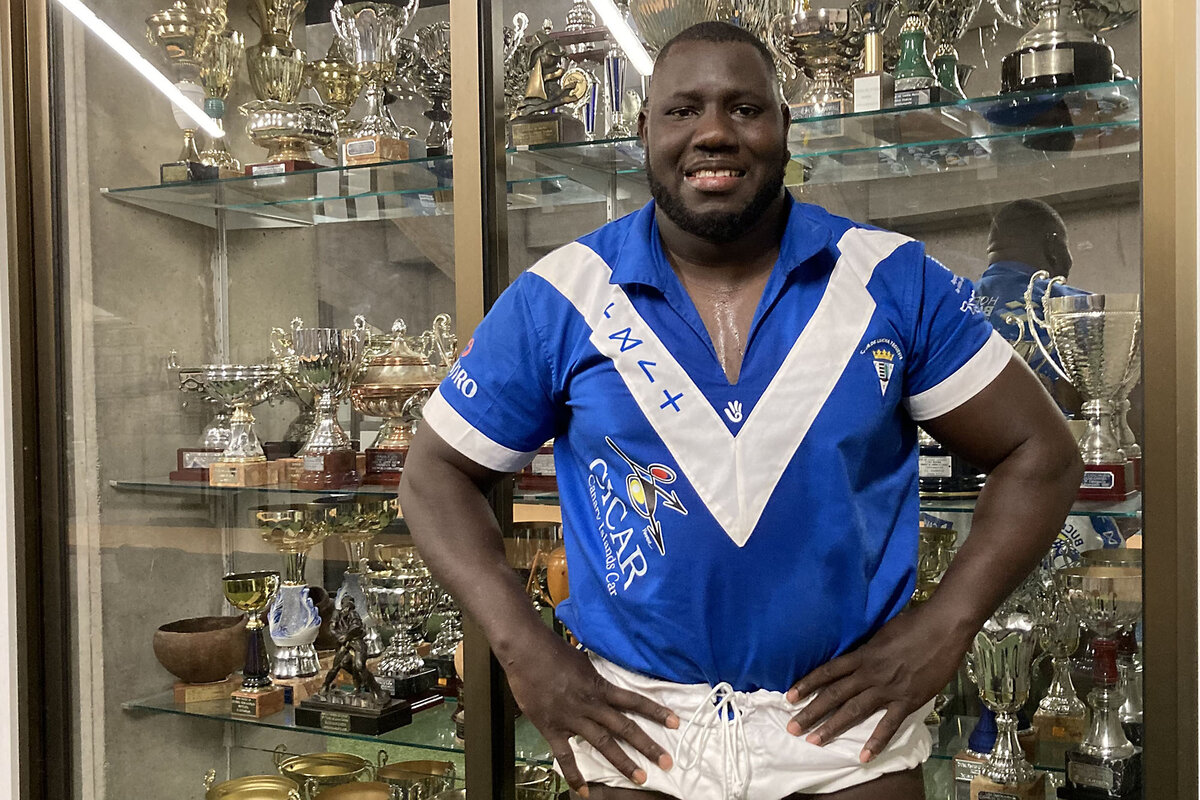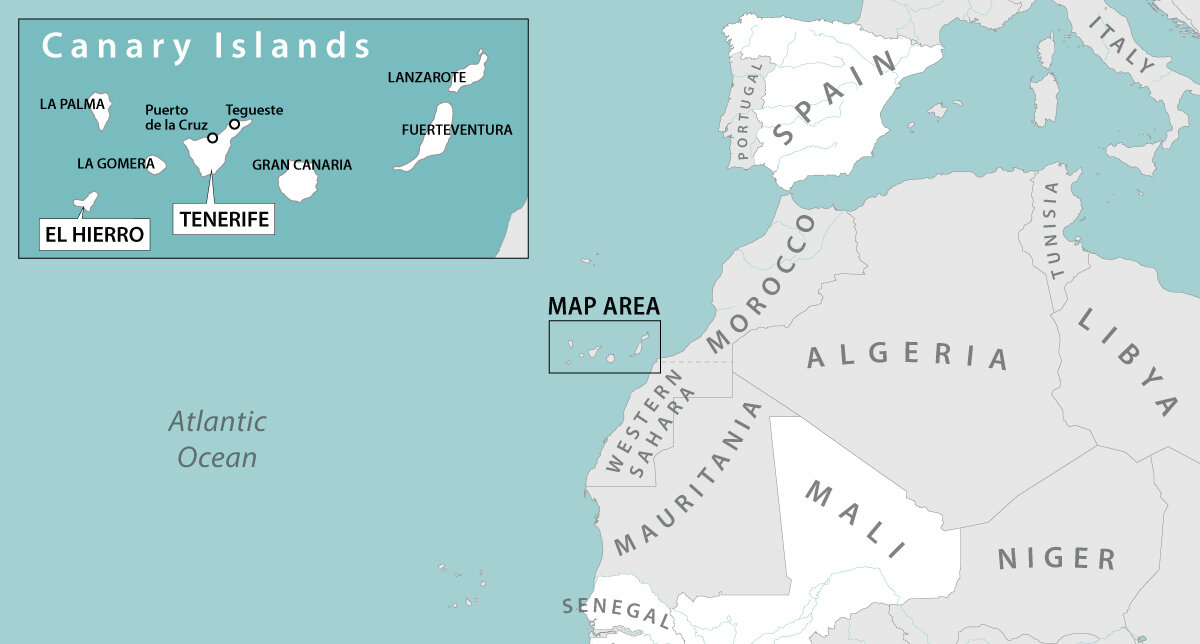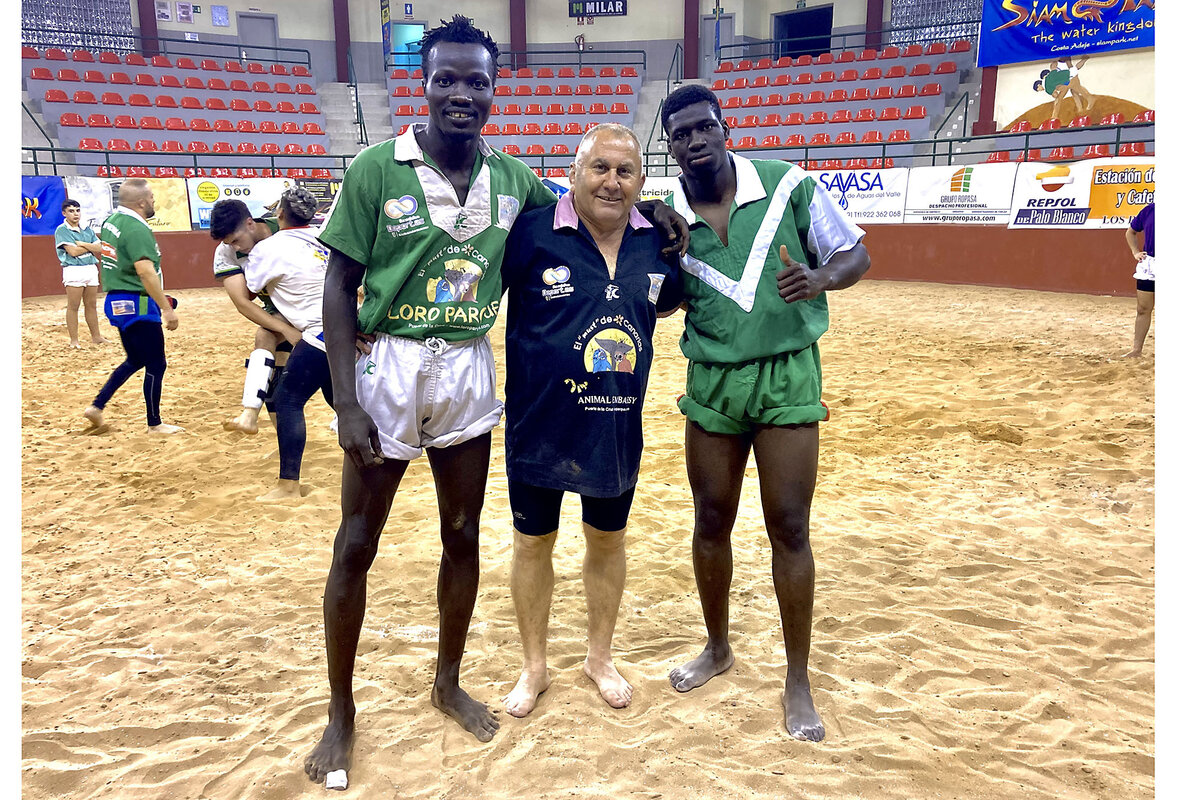An archipelago was losing its ancient sport. African migrants may save it.
Loading...
| Tegueste, Spain
Lucha Canaria – Canarian wrestling – is a traditional sport in the Canary Islands dating back to at least the 16th century. But in recent years, it has had to compete with other internationally recognized sports for young people’s attention. Today, the islands’ wrestling clubs are struggling to field competitors.
But lately, coaches are recruiting from an unexpected population: young African migrants. Not only are they joining in increasing numbers and reviving this traditional sport, but lucha Canaria has become a catalyst for their integration into Spanish society.
Why We Wrote This
A story focused onImmigration is sometimes perceived as a threat to tradition. But in Spain’s Canary Islands, it appears to be the means to preserve a centuries-old sport that has been in danger of dying out.
Whereas trainers once went into schools to tell local children about the ancestral sport, now they’re going to youth migrant centers for new recruits. On the island of El Hierro, the Concepción Club has built a team of 11 Senegalese minors, after coaches realized Senegal’s folk wrestling was similar to lucha Canaria, and that the sport could help the young men find a place in Spanish society.
“Migrants who end up living permanently in the Canary Islands approach local traditions with great respect and vice versa,” says Vicente Manuel Zapata Hernández, an associate professor. “Sports like lucha Canaria can serve as an instrument for social inclusion.”
Mamadou Camara and his opponent step out into the sandy arena. The two men – towering, hulking figures – bend at the waist and lock into position, grabbing the edges of each other’s rolled-up white shorts, head on each other’s shoulder.
The referee blows his whistle. And with a deceptively light touch, Mr. Camara throws his opponent to the ground, a spray of golden dust flying upwards.
This is lucha Canaria – Canarian wrestling – and Mr. Camara is one of the Canary Islands’ best wrestlers. But unlike most locals who enter this traditional sport through their parents or grandparents, Mr. Camara learned about it when a coach came to the youth migrant center where he was living after he arrived from Mali in a wooden fishing boat in 2008. Now it’s what’s keeping him here.
Why We Wrote This
A story focused onImmigration is sometimes perceived as a threat to tradition. But in Spain’s Canary Islands, it appears to be the means to preserve a centuries-old sport that has been in danger of dying out.
“I’m always learning. It’s not the same for me as locals who’ve been doing it since they were two,” says Mr. Camara, icing his ankle after a competition in Tegueste, on the island of Tenerife. “But it’s helped me learn Spanish, make friends. Lucha Canaria is about 80% of my life now.”
Mr. Camara wrestles for Tegueste, known as the birthplace of the sport. At the entrance to the town, a bronze statue shows two men tangled in an intense grip. Due to its rich history, the Tegueste Club has managed to maintain its roster, but that’s not the case across the archipelago. Clubs are fighting to return to numbers equivalent to the sport’s heyday in the 1980s, especially as lucha Canaria competes for young people’s attention in the face of other internationally recognized sports.
But lately, coaches are recruiting from an unexpected population: young African migrants. Not only are they joining in increasing numbers and reviving this traditional sport, but lucha Canaria has become a catalyst to their integration into Spanish society.
And at a time when migration to the Canary Islands – and racism against immigrants – is at a record high, lucha Canaria is helping build understanding between migrants and locals.
“I believe that migrants who end up living permanently in the Canary Islands approach local traditions with great respect and vice versa,” says Vicente Manuel Zapata Hernández, an associate professor of human geography who studies migration at the University of La Laguna in Tenerife. “Sports like lucha Canaria can serve as an instrument of social inclusion of young migrants and this is a factor in their normalization vis-à-vis the local population … and they help prevent racist behavior.”
A new life for, and through, lucha
Lucha Canaria was first played by the islands’ Aboriginal population, Los Guanches, and was considered a noble sport throughout the 16th century. In 1943, the first lucha Canaria federation was created and today, some of the more important matches are broadcast on local television.
Lucha Canaria is played on a circular sandy pitch, and players must knock their opponent to the ground through grabs, blocks, or lifts. Striking and chokeholds are not permitted. Wrestlers lose when any part of the body besides the soles of the feet touches the ground.
But despite its longevity, lucha Canaria remains a local sport. The only equivalent abroad is traditional Korean wrestling – ssireum – so the opportunities to play it internationally or professionally are practically nonexistent. For the 2023-24 season, 2,794 people are officially registered among the 2.2 million people living across the chain of eight islands, according to the regional Lucha Canaria Federation.
“Kids don’t see it as an attractive sport anymore,” says Marco Galván Rodriguez, the president of the Tegueste club. “They think it’s for our ancestors. They want to play soccer or basketball, or play on their cellphones.”
But African migrants are changing that. In 2023, the Canary Islands received over 40,000 migrants, surpassing numbers from the archipelago’s 2006 migratory crisis. There are currently around 5,000 minors on the islands and around 60% are unaccompanied, according to the Immigration Observatory of Tenerife (OBITen).
While the majority of those over 18 years old are sent to the Spanish peninsula upon arrival, minors are provided housing in dedicated centers, where they can learn Spanish and get administrative help. That’s where lucha Canaria coaches increasingly see an opportunity.
Whereas trainers once went into schools to tell local children about the ancestral sport, now they’re going to youth migrant centers for new recruits. On the island of El Hierro, the Concepción Club has built a team of 11 Senegalese minors, after coaches realized Senegal’s folk wrestling was similar to lucha Canaria, and that the sport could help the young men integrate.
The Spanish national government also sees sports as a way for young migrants to learn local traditions and Spanish values. In October, it announced the opening of 25 new sports centers, distributed between the Canary Islands and the Spanish peninsula, aimed specifically at migrants and their social integration.
“The majority of migrants don’t want to stay here in the Canary Islands,” says María Fonte García, assistant director of OBITen. “But for those who do, especially minors, there are more and more initiatives being created to help them integrate and create a life here. Sports are playing a significant role in that.”
“One more person at the table”
It’s not to say that integrating into Spain’s relatively homogenous social fabric has been easy. The continuing influx of migration in the last two decades has meant that immigrants face higher than average levels of microaggressions, dehumanization, and indifference, especially those who are racial minorities, according to a January study by OBITen.
But sports like lucha Canaria have offered one way around that. Juan Pedro Hernández, the coach of the Adelfas Club in Puerto de la Cruz, Tenerife, says when he first invited his newly recruited African wrestlers to his parents’ house a few years ago, it was a shock.
“My parents had never had a Black person in their house before and they were uncomfortable at first,” says Mr. Hernández, taking a break on the stadium bleachers during a Monday night practice. “But now they say, ‘OK, it’s just one more person at the table.’”
Mr. Hernández says it’s been easy to integrate the half-dozen African migrants who practice regularly at his club into the team. He makes sure not to serve pork during team dinners for those who are Muslim, and some wrestlers have gotten seasonal work at his ranch.
The feelings are mutual. Souleymane Sady arrived in El Hierro in 2020 from Senegal and sought out the local wrestling tradition once he got to Tenerife because his grandfather was once a champion of Senegalese wrestling. He has learned Spanish and made friends through the sport.
For Youssouf Toure, who has been at the Adelfas Club for three years, lucha Canaria and his team have become like family. Mr. Hernández tears up when he talks about Mr. Toure, who arrived unaccompanied from Mali to Gran Canaria at age 16.
“When I think about all he’s been through to get here and have a better life, by himself …” says Mr. Hernández, his voice trailing off, as the two sit down on the bleachers before practice.
“Juan Pedro is like my dad,” says Mr. Toure, looking off toward the pitch. “I know that if I have any problem, he’ll find a solution. He’ll be there for me.”












